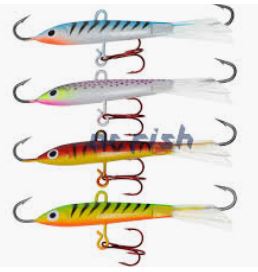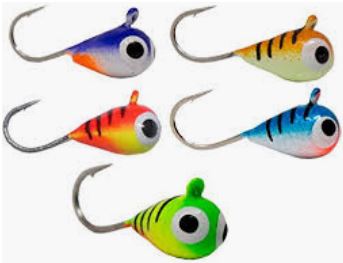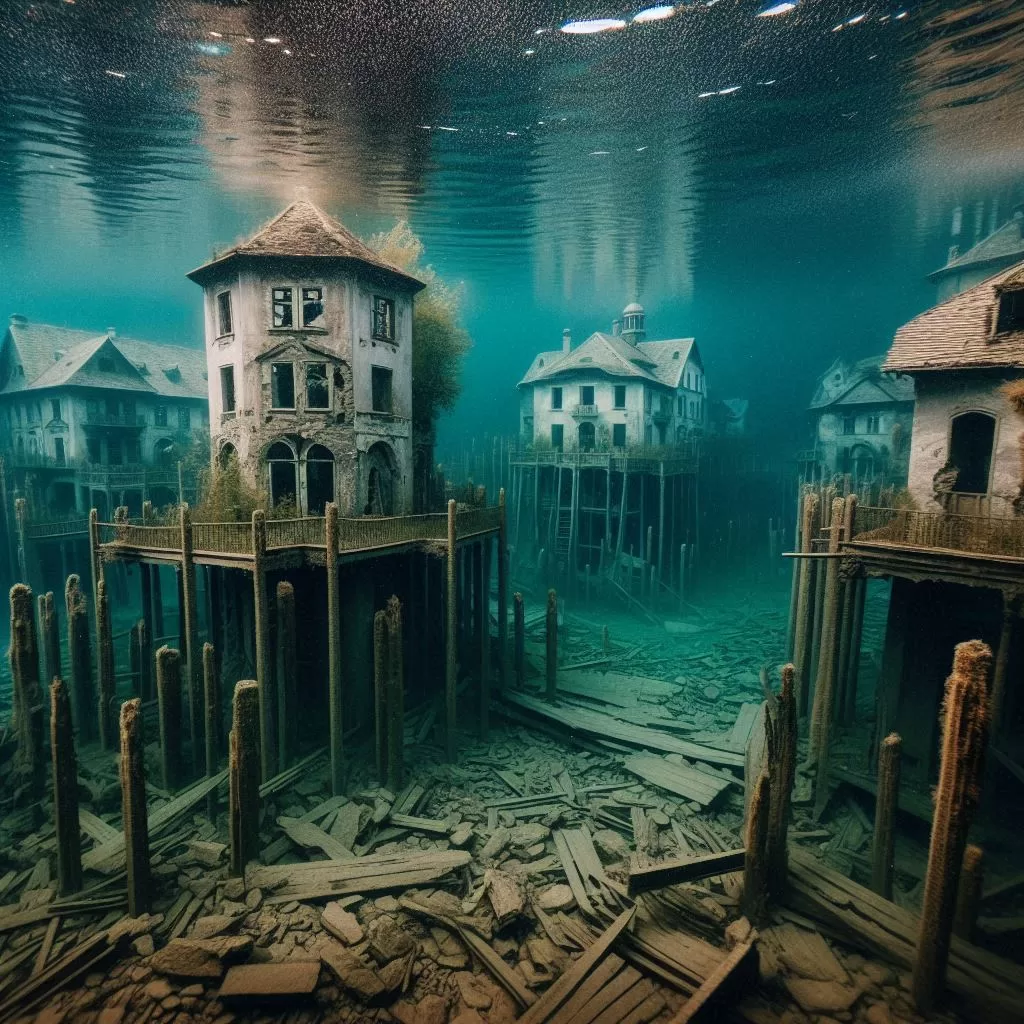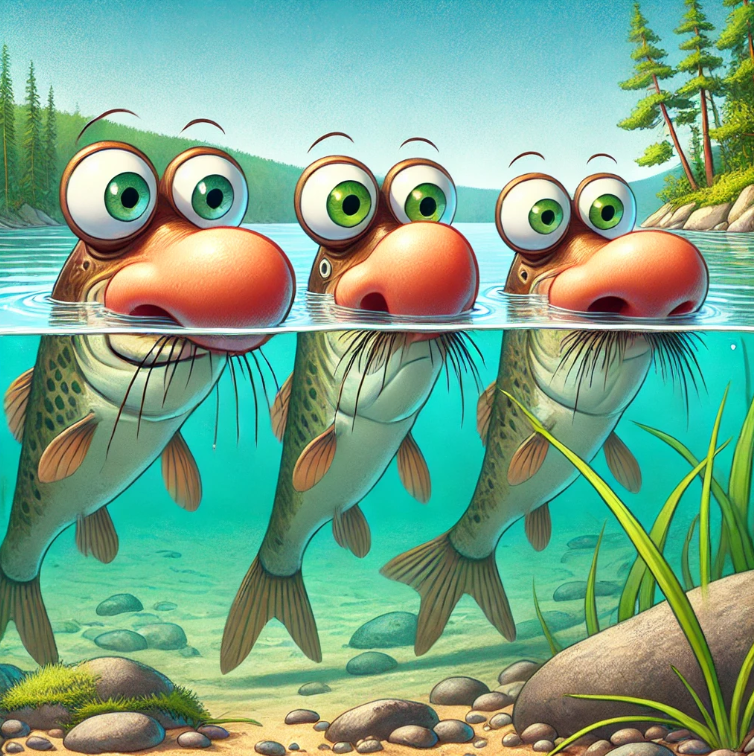I’m going to attempt to be less factual and little more fun with this article, we all need to have a little fun every now and again, right? Let’s start out with the fun and then I’ll attempt to get into the basics of ice fishing.
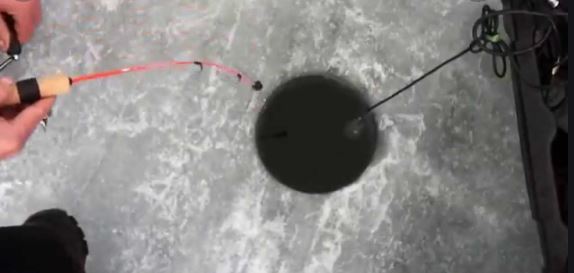
PHASE 1
Things Too Consider for A Successful Ice Fishing Trip
- Wait for the water to freeze, otherwise you are just fishing and I’m not sure your ice hut would float very well.
- Falling into the water especially at the depths that we have in Lake Wallenpaupack would most likely count as your last official fishing trip. Unless you can hold your breath for a really really long time, like 4 months.
- Driving any vehicle on the ice without being absolutely certain the ice is frozen solid is detrimental to your health & wallet/pocketbook, women are too smart to die while ice fishing anyway so I’m not sure why I wrote pocketbook? It’s always the guys you read about driving their Jeep off into the lake or a snowmobile lost in 40 feet of water…the more I think about it the more I am realizing that we do all kinds of dumb stuff. It sure is fun though….
- Dress appropriately. Frostbite is a real thing and can happen in temperatures at freezing or below. I’m going to drop some knowledge on you right now, wind chill “cannot” make the actual temperature drop below freezing. So, if the thermometer says it’s 33 degrees Fahrenheit you ain’t getting frostbite. However, if you expose your bare bum to say ice or freezing water…well, let’s just say bad things can happen.
- Auger’s are very sharp and will cut you. So we’re clear on this point, if you aren’t aware of what an ice auger is then let me explain…It’s a drill looking thing that can be used manually or gas powered, it has little share razor like blades to shave the ice and allow you to “drill” a hole wide enough to drop a line through…Most holes are 6 inches to 8 inches in diameter. I’ve heard of guys cutting their legs, fingers. You gotta be careful, remember…guys do stupid stuff while trying to have fun.
- Never pour antifreeze in your hole….no, not that hole or the other one btw. Laugh if you want but I’ve seen it and I don’t like it. It’s straight up bad and inconsiderate. I’m not sure what the fine would be but I hope it’s like $500 and a loss of your fishing license. Again, the EPA in addition to the DCNR would have field day with you. They make these crazy little $4 dollar spoons you can use to scoop out your fishing hole. It’s not necessarily easier but it is better for the environment.
- If you head to the lake, doesn’t matter if you are using your spinning or bait caster and you cast in several directions for hours upon hours and don’t catch anything, there is a small chance that you are ice fishing incorrectly. Remember, if the lake is frozen you need to drill holes and use the correct gear…tip-up’s and ice fishing rods are recommended.
- If you hear cracks and creaks when you walk out onto the ice, that doesn’t mean the ice isn’t frozen enough for you to fish. It could mean that, you can tell when your foot and then leg go in first followed by the rest of your body. Most of the time it’s a result of a temperature change and your own body weight. Ice on top usually means water on the bottom, there are all kinds of noises that you can hear while ice fishing. Just be sure you are certain that ice is frozen enough to fish.
- Drinking while ice fishing is a right of passage in my book. You don’t have to keep your beer on ice most of the time, depending on what you are drinking it may help keep you warm or make you forget that you are freezing and it’s just a great way to connect with a friend, buddy, wife, husband, girlfriend and if you are lucky, the park ranger and state police. In all seriousness, don’t get all stupid out there but an ice cold one sure does taste great out on the lake anytime of year!
- The biggest challenge that us guys face is trying to get the big fish through the little hole, right? When this happens….actually, at this point in the writing I need to check with a friend…I’ll be right back. Okay, I’m back…he gave me the answers I needed. If by chance you have a monster on the line and you can’t seem to get it through and out onto the ice you can do two things…Chip away at the ice attempting to make the hole bigger or drill another hole as fast as humanly possible in an attempt to connect the two holes. Good luck with your big one, we only want to see pictures of your fish so go ahead and post those up on our Catch & Release page!
- Let’s say you have an ice fishing hut or any kind of shelter because as we all know it get’s crazy cold out there sometimes, we don’t use any type of “gas” based heat system without proper ventilation. Things like propane or kerosene heat can build up enough chemical fumes within any confined area that isn’t properly ventilated and put you to sleep for a very long time. You may even be awake one minute thinking how tired and groggy you feel, the next minute you are on a one way ticket to the boss in the sky or if you don’t catch & release maybe the guy down South…I’m kidding about that last part. In all seriousness though, you should keep alert and aware, there are several things you can do to keep warm on even the coldest of days. Do your work, be smart and stay safe….

PHASE 2
Have A Safe and Fun Ice Fishing Experience……(3 STEP PROCESS)
Ice fishing 101 tutorial, I’ve been thinking a ton about ice fishing Lake Wallenpaupack this year. The minute the boat was winterized and put away I shifted my thinking and started buying some gear. Did I overdo it, definitely not as I still need some jigs and maybe even a rod.
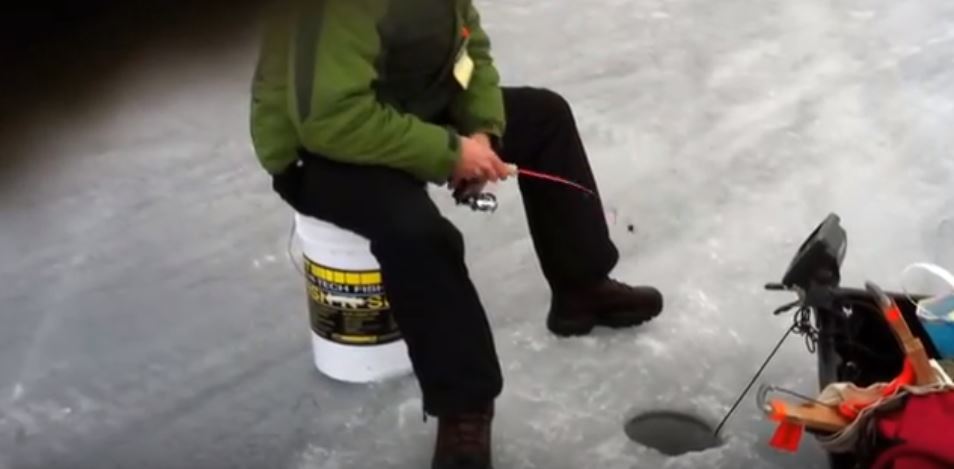
For this article, I’m going to stick to the basics. Happy to receive feedback if you can share your information in a positive light so that it can benefit us all. Afterall, we are only trying to help our community and teach folks a few tricks of the trade.
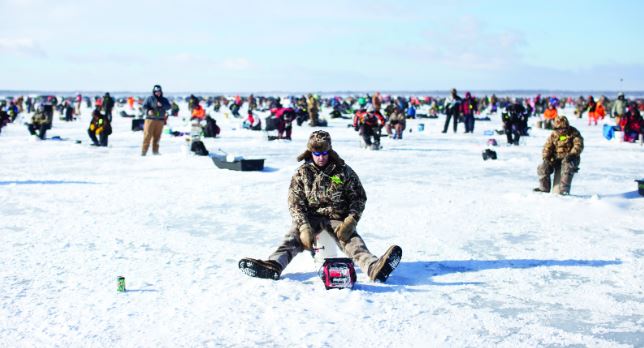
Step 1 – Location:
You can fish almost any state, public or private (with permission) body of water once it freezes. In Pennsylvania, Ice Fishing generally begins in late December through Early March. Peak fishing occurs between January and February. How do you know the body of water you want to fish is frozen? I’d start out by stating the obvious, you see no exposed water, no moving water and if you aren’t the first one there that you see other people already fishing. You can use your best judgement, but the outside temperature typically needs to be below freezing for a few days to build a strong enough layer of ice. A general rule is (4 inches) of ice is good for a small group but I personally like it to be around 6 inches. How thick should the ice be to drive your $14,000 snowmobile out over the water (5 inches) and how about the $62,000 Ford pickup truck???? Yes, you guessed it (8 inches). By the way, Wally BITES has neither so we’ll be hoofing it out on the lake with all our gear.
Step 2 – Gear:
Augers
You can’t go ice fishing without a way to cut through or drill through the ice, think of the ice as a forcefield protecting the fish you want to catch that are living in the water below. In order to successfully access those fish you will need some type of Ice Auger. There are a few options here and the price ranges are insane. If you have deep pockets or are an avid ice fisherman, you probably should invest in a gas-powered auger. In doing some research, I found that using an earth auger will simply not do the trick. The blades and purpose differ a bit, while the ice auger shaves away the ice with the sharp blade edges the earth auger moves dirt and sediment in a more barbaric manner. The manual version of the ice auger is more affordable, with a little power and proper usage technique you can be through the ice rather quickly. Holes may not be bigger than 10 inches, most augers come in the 6” and 8” drill bit sizing. As of now, I do not believe there is a limit on holes you can drill but there is a limit on devices you can use…I’ll get into that a bit later.
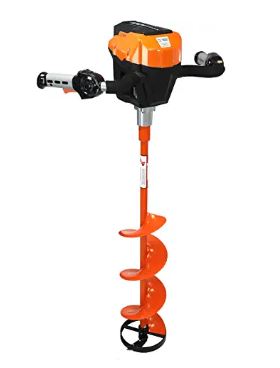
Power 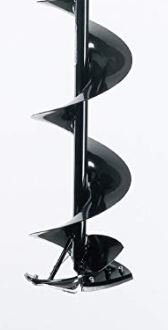
Blades 
Manual
Clothing
Depending on the weather and outdoor temps its extremely important to dress appropriately. We recommend a insulated suit, or at least water proofed pants…You do a ton of sitting and kneeling while ice fishing. The key is layers of clothing and as the temperature adjusts and you begin to acclimate you can remove layers without impacting your overall safety. Good gloves, warm socks, hat and boots that help eliminate any exposed skin. Sunglasses are critical especially on the sunny day, the reflections of light off the ice and surroundings can be blinding.
Aside from warm clothes, many fishermen will brave the elements through a fishing hut that they have either purchased or built. I’ve seen just about everything out on our lake! Remember, if you are using one of these you might want to avoid gas-based heaters. Huts range in size and shape, some fit multiple people and others are a one person show. Either way, you should consider bolting these down to the ice once set up as they tend to fly or sail away.

Rods & Tip-Ups
Now that you are out on the lake, have your holes drilled and your hut set up you need to get your lines in the water. Several techniques here; mostly two main approaches that I’ve seen, experienced and researched. You need a tip-up which allows you to place a line in the water, the tip-up will lay across your holes and it somewhat of an automatic fish catching machine. When the line receives a strike a flag will deploy and launch up in the air alerting you to the fact that a fish may be on the line. The other approach is more like fishing, you have an ice fishing rod which is shorter than normal rods and you sit next to your hole and jig, bounce, work your lure or bait.



Successful trips often require a variation in approach and technique. You may only have “5” devices active while ice fishing. There are penalties for not adhering to the rules. In that same vain, all fishermen 16 and older are required to have a valid fishing license.
Baits & Lures:
Okay, back to the types of bait or lures you intend to use. For jigs you can go 1/32 to 1/8 ounce depending on targets and 5/8 ounces for more of a lure type approach. You can go heavier for deeper presentations. You can add a dead minnow to any jig by cutting it’s head off and sliding it up the hook, keep it moving as the Walleye will strike. If you prefer to use live baits; leeches, wax worms, maggots, meal worms, giant meal worms and minnows both dead or alive will work. If using bait or even a jig rig you may not have more than a single fishing line with more than “3” hooks on it. Again, that’s against the rules and you don’t want to break the rules. Speaking of line, you probably want to consider a different type of fishing line that you usually use as the temperatures can impact your line in a very negative way. Look for special braided ice fishing line which can withstand the elements.
Step 3 – Species:
So every body of water is different but in our lake, you know the one….Lake Wallenpaupack you can expect to catch several species of fish regardless of what types of rig, bait or lures you are using. In Pennsylvania the most common types of fish you can expect to hook up with would be the Largemouth Bass, Yellow Perch, Crappie, Chain Pickerel, Northern Pike, Blue Gill and Walleye.
Is it possible to catch another species not outlined here, yes! We are fishing right? I sure would be fun to hook up with something huge and attempt to pull it up through the hole, out of the water and up onto the ice. Take like 80 pictures and slowly let it back into the water. If you eat them, that’s okay too. To learn more about species of fish that live in Lake Wallenpaupack you can check out these two helpful links we have on our site. Link 1 and Link 2
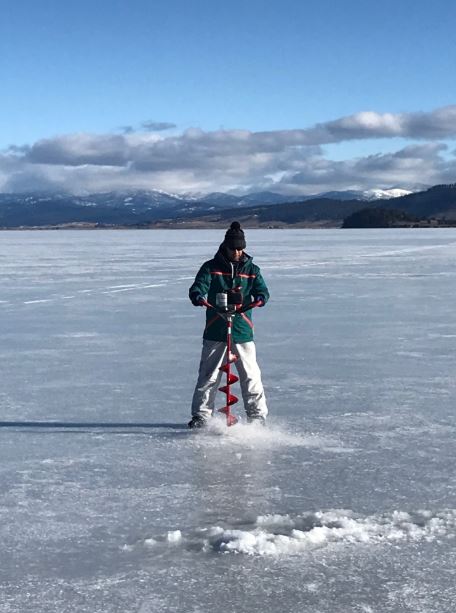
Closing: Have Fun & Enjoy Those Freezing Temps
Again, this isn’t everything you need to know about ice fishing but hopefully it’s a good start to help you get on your way or maybe you just found our style and approach to writing funny. Either way, thank you for being a reader and we hope you’ll continue to visit our site, engage with our social media activities and maybe even share some feedback with us. Enjoy the cold weather and don’t set that hook too hard, a bum to ice landing can really hurt!
